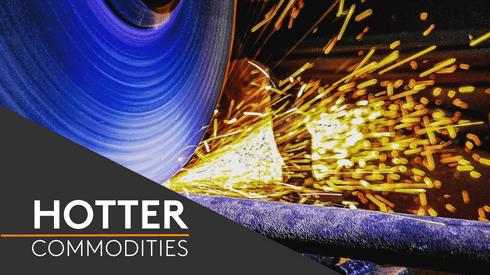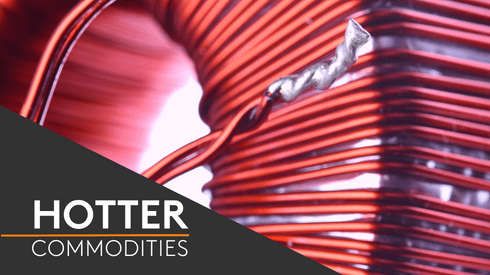Copper is popular right now. In intraday trading last week, on May 20, the London Metal Exchange three-month copper contract hit a record high of $11,104.50 per tonne.
The copper concentrate market is also breaking new records in May 2024. The treatment and refining charges (TC/RCs) that smelters charge miners for the processing of copper concentrate are at all-time lows.
Indeed, TC/RCs, which are measured as a discount to the cost of the refined metal, are in negative numbers – copper concentrate costs more than the finished material.
Fastmarkets most recently calculated the weekly copper concentrates TC index, cif Asia Pacific, at a discount of $3.80 per tonne on Friday May 24.
This was down by $0.80 per tonne from the assessment on May 17, and was the lowest level in Fastmarkets’ records going back to 2013.
The high prices of both refined copper and copper concentrate are shaking up the industry. BHP’s failed mega-bid for Anglo American was motivated by the prize of creating the world’s largest copper producer, which would have controlled 10% of global supply.
But while such mega-mergers create economies of scale, it is uncertain whether they boost overall copper supply. In any case, the bid demonstrated mining investors’ desire for more copper exposure.
“From the get-go, the takeover bid from BHP for Anglo has shone a spotlight on an already hot copper market,” Fastmarkets analyst Will Adams said. “The demand trend for the red metal [arising] from the green energy transition remains very bullish, and this is reflected in the recent [rise] in the price.”
Ramping-up production
Another way that mining companies can please copper-hungry investors is by ramping-up production. Indeed, there have been a slew of such project announcements in recent weeks.
MMG, the Chinese owner of the struggling Las Bambas copper mine in Peru, announced in May that its often-delayed expansion project could begin in the second half of 2024.
If it reaches full completion on schedule in early 2025, the expansion could take Las Bambas’ copper production to 400,000 tonnes per year, compared with 300,000 tonnes in 2023. The Las Bambas expansion has been delayed by local community protests.
In mid-May, Southern Copper Corp said that it would push ahead with its Tia Maria copper project, also in Peru. This project has been subject to local protests since 2015, but now the company feels that the time is right to take it forward.
It is not just the price of copper that is encouraging new projects, according to the chief executive officer of Triple Flag Precious Metals, Shaun Usmar.
“The higher gold price should boost copper production,” Usmar said. “According to our analysis, more than half of all future copper supply will come from polymetallic deposits. So a high gold price improves the financial feasibility of a copper-gold mining project.”
Greenfield mining projects
But while expansions are difficult, building new mines is even more so. Usmar estimates that the time for taking a new copper discovery to production can now be almost 20 years, compared with fewer than 10 years a decade ago.
“Developing a greenfield mining project is like the [motto from the movie] ‘Hunger Games’ – may the odds forever be in your favor,” Usmar said. “If you have a brownfield site that is next to existing ore bodies [and] infrastructure, and has community support, then that has a much better probability of success.
“Our analysis of pre-pandemic mining projects worth more than $500 million shows that one in five have been delivered on time and [within] budget,” he added.
“I think there is a fallacy at times, where investors will look at the space and think that a major [miner] has more capacity to bring new supply online, and that [creates] a lower-risk prospect than a single-asset producer, but the data doesn’t support that,” Usmar said. “We have seen massive overruns from big companies bringing on new supply.”
The danger for investors backing such long-term mining development projects is that the copper price could fall in the meantime.
“The current fundamentals of copper are not as bullish as the price suggests,” Adams said. “Stocks have risen sharply on the Shanghai Futures Exchange, the nearby spreads on the LME are not showing tightness, and the low TCs are more to do with excess smelting capacity rather than strong physical demand for refined metal.
“Also, much of the recent strength has been more to do with a short squeeze on CME copper, and the dislocation between where physical stocks are, the brands and the location,” he added. “A lot of the available copper stock is not deliverable against CME shorts – hence the squeeze.”
But a quick boost to copper supply has come from the Chinese scrap market, with the higher prices for copper motivating scrap traders to increase the volume of supply to smelters.
Inform your base metals strategy with metals price forecasts and analysis for the global base metals industry. Get a free sample of our base metals price forecast today.






